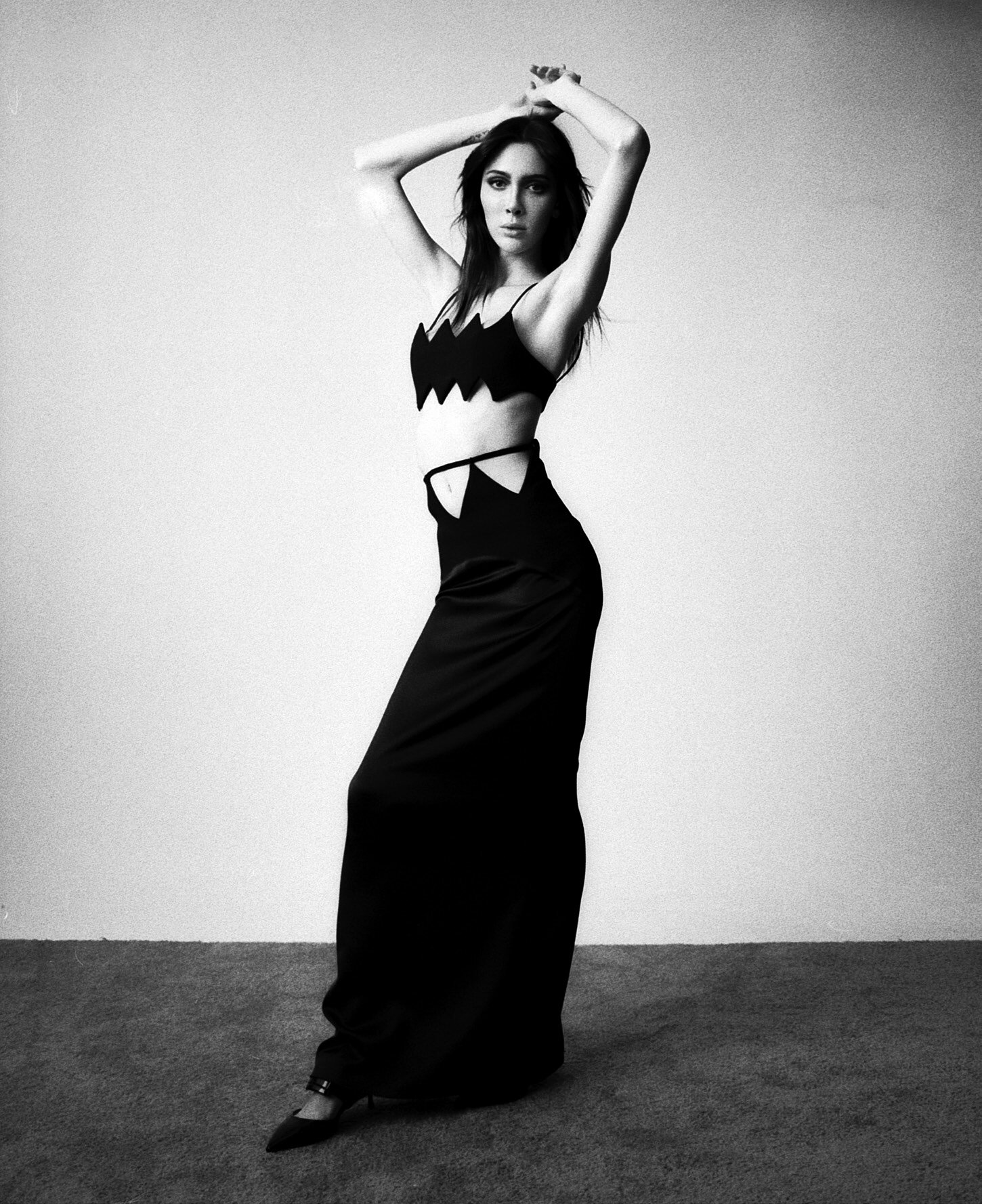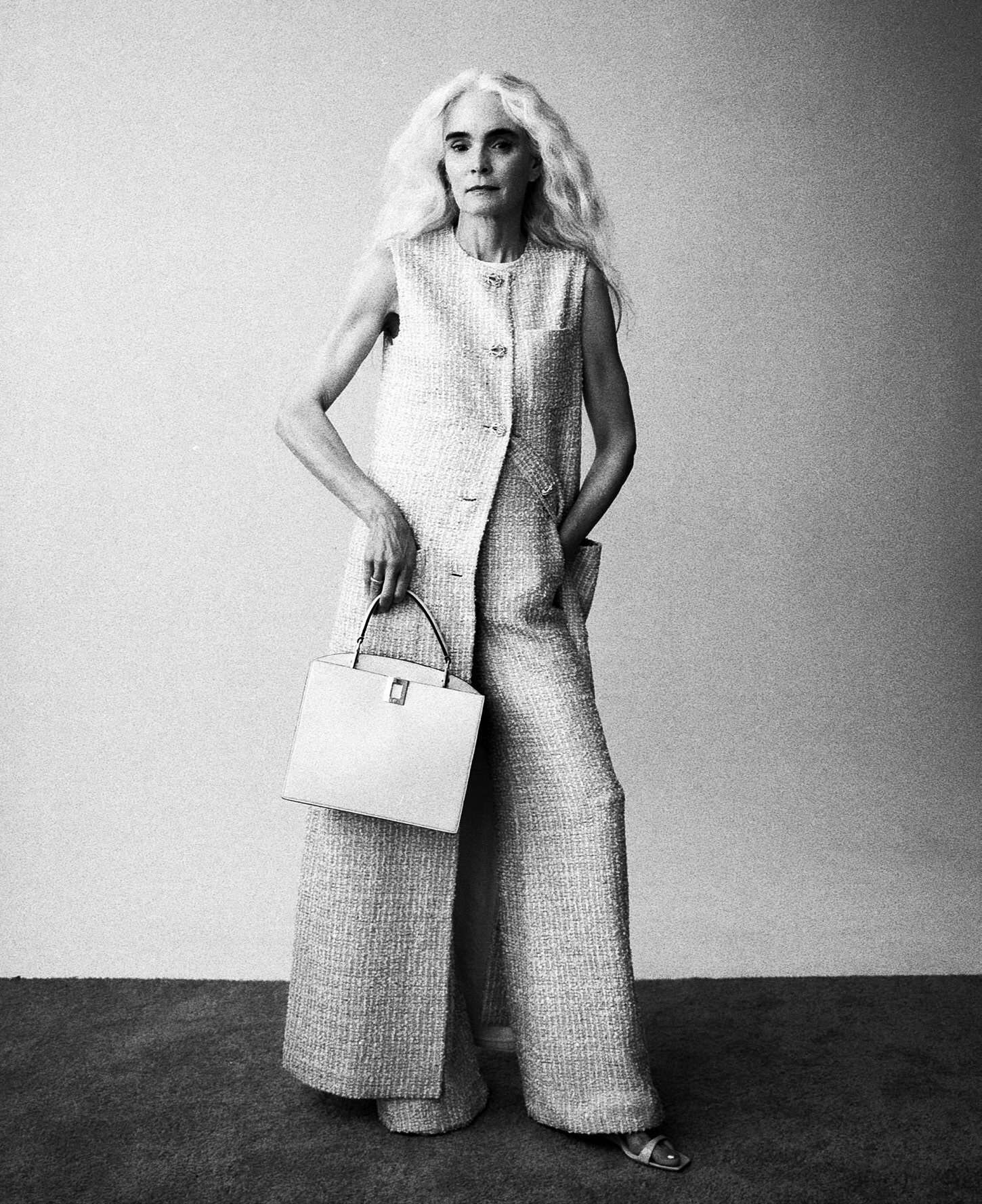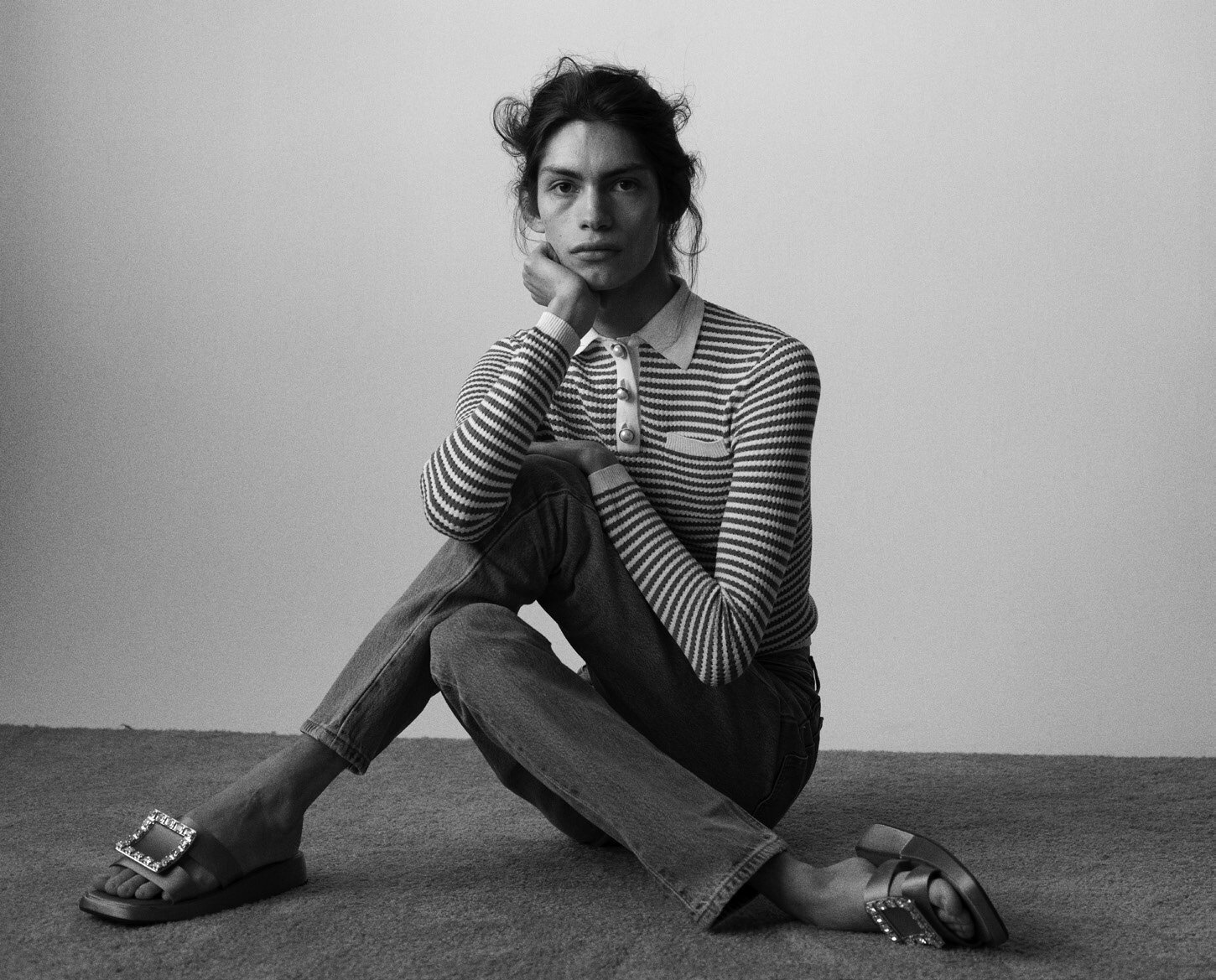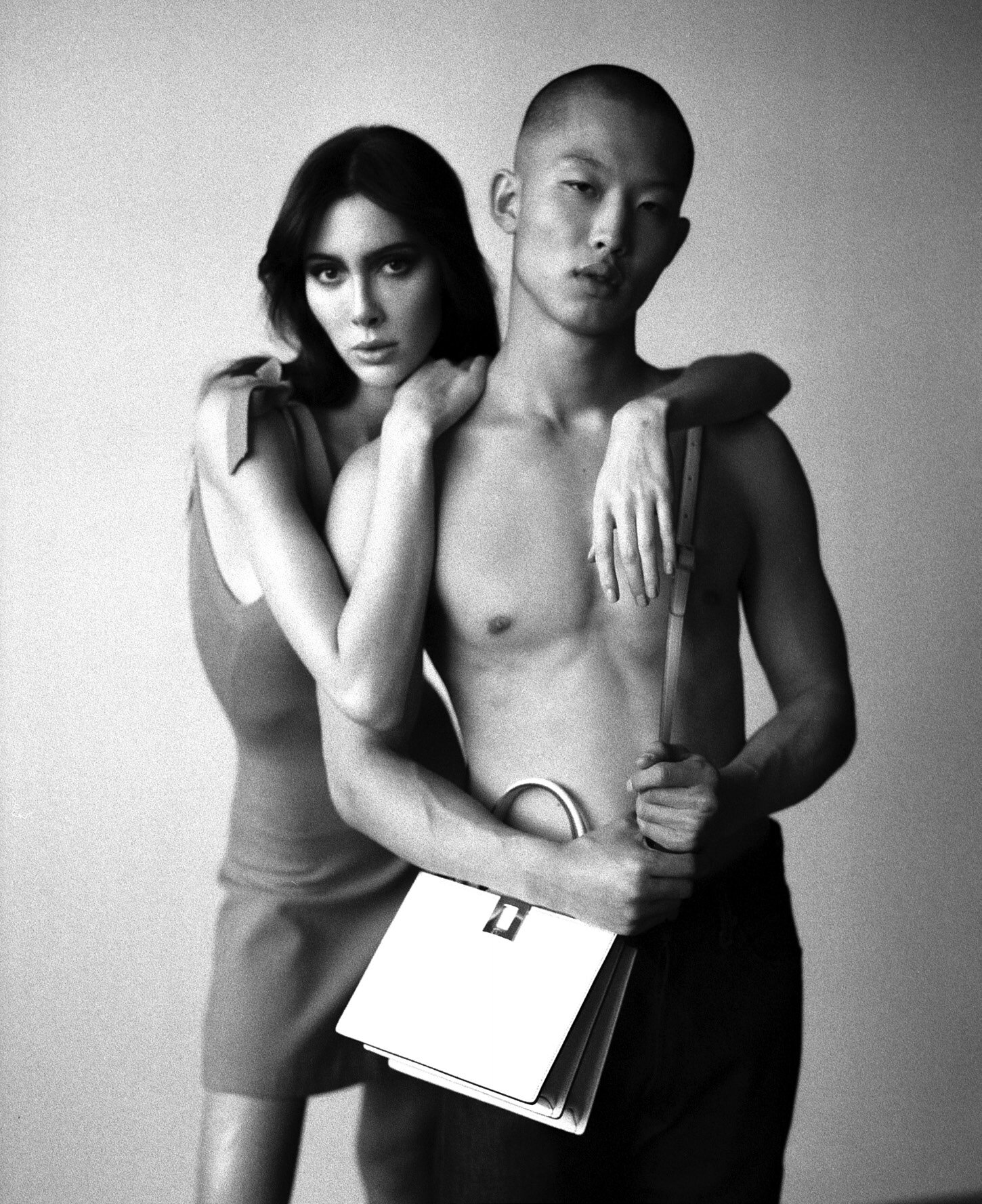💭 Gherardo Felloni for ODDA Magazine
This article first appeared in the ODDA Magazine 20th Issue “There is a Time”.
GHERARDO FELLONI
In just under three years, Gherardo Felloni, the creative director of Roger Vivier, has put a new spring in the step of one of the world’s most famous souliers. Since his arrival at the French house, Felloni has given Vivier a fresh joie de vivre with his introduction of the first-ever Vivier sneaker, his unforgettable fashion week collection presentations, and his cinematic style of brand storytelling. Felloni’s infectious positive attitude and his light-hearted approach to shoemaking are however grounded in over 20 years of designing footwear for some of the biggest luxury brands, including Prada and Dior. Not to mention his father and uncle are also shoemakers. For Felloni fashionable footwear is a way of life.
Portrait by PIERRE EMMANUEL TESTARD @BeaumondeParis, Grooming RICHARD BLANDEL @WebmasterB-Agency
JESSICA MICHAULT. In Tuscany, where you grew up, you were surrounded by the world of shoe design. Do you feel like it was always your calling? And what were the big lessons you learned from your uncle and father, who were shoemakers, during those early formative years?
GHERARDO FELLONI. For me, it isn't easy to describe when the passion became alive. I grew up in a shoe factory. My uncle and father had a shoe factory since 1958. They used to work on shoes for luxury brands. So my passion for shoes has always been there. So it is actually really difficult to determine the moment where it became a passion, it was just always a part of me. From my uncle, the biggest lesson that I learned was that shoes have to be comfortable because you always have to remember that there is going to be a foot inside them. If your feet aren’t comfortable then you can’t really be happy. That is something that my uncle was really attached to. From my father, one of the biggest lessons that I learned was that you cannot force someone to do something they cannot do. You have to take the best from everyone on your team and use those talents so that they do their best work for you.
JM. Before joining Roger Vivier you worked with Miuccia Prada and John Galliano. What did your time working with both those houses teach you?
GF. I started with Prada and it was a big privilege to be there, it was completely another world than what I had known before. Then I worked for Dior with both John [Galliano] and Raf Simons. The experience was quite eclectic. One thing I learned during that time, working at those houses, was that sometimes I was too sure of myself. On one hand, this was a good thing because I was confident but at a certain point, sometimes that confidence can lead you to make something that was wrong. Wrong in fashion means you can do something that is sometimes too far in advance, or too old. Sometimes I would propose things that were out of the blue, way out of context. One of the important things in fashion for me is the context because I do not want to make fashion political at all. But fashion is the manifestation of the society we are living in. It is really important to be attached to reality in a way.
JM. When you joined Roger Vivier it already had a pretty famous origins story and your predecessor had been at the house for over 15 years. What did you feel was your biggest challenge stepping into those shoes as the new creative director?
GF. In the beginning, I was scared. But even though I was scared I still tried to get this job because it was my dream. Finally, I decided to just act as usual because I had over 20 years of experience. I have realized after all these years that the best thing to do is to approach fashion with your own taste. You have to be happy with your product, and you have to be convinced. That makes things real, consistent, and people will understand. Someone may not like what you propose but they will understand that you did it with your heart and vision.
JM. What I love about your tenure at the house is how playful and fun it has become. You seem to take having fun with the footwear very seriously.
GF. It is the same in show business and movies. When you have to communicate something funny, something happy, it is the most difficult thing to do. It is a projection. I think fashion is linked to happiness because we are selling dreams. For me, it is more challenging to do something fun than something serious. In the last year, fashion lost a bit of its sense of humor. For me, I am not taking myself seriously in any case.
“I have realized after all these years that the best thing to do is to approach fashion with your own taste. You have to be happy with your product, and you have to be convinced. That makes things real, consistent, and people will understand. Someone may not like what you propose but they will understand that you did it with your heart and vision.”
JM. Your Hotel Vivier presentations during Paris Fashion Week have always been a highlight of the week; so much fun and energy. Why was that sort of outlandish presentation important for you?
GF. When I proposed the idea, everyone looked at me like I was crazy. But I thought that I had to do what I liked so people would understand and enjoy it. I did not have a silhouette because I did not have ready to wear. It was really crucial for the shoes to be linked with the silhouette and body. So I hired actresses to wear the shoes at the presentations instead of models because we needed the character that actresses bring. We needed what they had inside. Everybody was shocked but I had the chance to show what was in my mind. I like women that do something, not just their bodies. They are powerful. We have to be linked with that.
JM. One key element that you have brought to the house is a real cinematic flair for storytelling with lots of enticing little videos. Tell me more about the thinking behind this approach to connecting with your customer.
GF. The idea of a cinematic point of view comes from two reasons. One, because I really love cinema and acting. It feels like it is in my DNA. Two, I believe that in the code of Vivier is cinema. These kinds of shoes change the silhouette. I think that Roger Vivier’s mainstream success comes from movies. So I thought let’s go back to the basics, let’s start with a cinematic point of view to tell the new Roger Vivier story.
JM. In terms of the way you work, how do you like to create? Do you have tricks to get you in the creative mood?
GF. I am really basic. It means that I work on a train, plane, alone, or in a team. For me, it is really natural. There isn’t anything that I really need or feel that is important for me to start sketching shoe designs. Sometimes I ask myself why this is, how is it possible that I can just start sketching anywhere, anytime. But I think it is because I started really young in this business. When I was 18 years old I could draw 100 pairs of shoes in a day. Even if I have someone in front of me that is in the middle of demolishing a wall, I can still do my job. I feel that this skill is actually what makes it possible for me to continue to do this job. It comes from me easily, which is good because being the creative director of Roger Vivier today is so much more than just designing the shoes. I have so much more to do, so if I couldn’t design in any situation it would make this job a lot harder.
JM. Tell me, what was the reaction like when you announced that you would be launching the first-ever Roger Vivier sneaker, the Viv’ Run?
GF. The reaction was really cool because it was one of our best sellers. I think it is a beautiful sneaker and one of the first shoes that I drew for Vivier. It was a Christmas holiday and I did not start my job here at Roger Vivier until the next February. I was thinking of something that Vivier missed, and that was the running shoe. Today the running shoe is something that is normal. So to be contemporary you need it because it is something women wear. That is the beautiful thing about women today, there are so many women in one. Today, you wear sneakers because you need to walk somewhere but tomorrow you are going to dress up in super high heels. This is what I love about my job, getting to create shoes for all women and all the different things they do.
JM. Roger Vivier’s shoes have been worn by some of the world’s most beautiful and powerful women. Who are the new Vivier women who you feel embody your vision for the house?
GF. This question for me is silly because it is contradictory to say that I have a muse, which is really easy in fashion to say. I have this curiosity that goes in all directions. I am not interested in one particular type of woman for Roger Vivier. Of course, these women can understand the value of the shoes and bags we are selling. But their features do not matter, what they look like doesn't matter, I am really clear about this. But I do love women who have a job and do something. I love when they are self-realized. That is why it is easy to find women for Vivier.
“I do love women who have a job and do something. I love when they are self-realized. That is why it is easy to find women for Vivier.”
JM. Besides your love of shoes, what other passions do you have?
GF. I studied opera for years, I did a conservatory here in Paris. I am a tenor. But I stopped singing because I have too many things to do now. But I studied music, and I would love to be a composer, but for now, that is not possible. I also have a large antique jewelry collection. I have been wearing antique jewelry for over 20 years, long before it was fashionable, or even acceptable for men to wear jewelry. Otherwise, I like gardening, I am lucky enough to have a garden in Paris and I do it all by myself. I also love interior design and many other things, but those are the top ones.
JM. How has the pandemic affected you and your work? How are you remaining positive during this time?
GF. We are in a bad moment, but in the history books, there were worse times. I want to be positive. The pandemic is very heavy but it can be worse. That is the positive attitude. It is a sanitary problem but I think the social problem is going to be bigger after this pandemic. Now, I start to think that this pandemic has a big social impact. It changed something in us, for example now when you see someone touch someone it is scary. So I am curious to see how this pandemic will affect us socially, in our relationships, in the future.
JM. Ok, but when we can all come together again, what is the first thing you want to do?
GF. In my job, I will start to go back to the office often because I like to work here with my people. I will do a new show with Vivier because you feel something that you cannot feel digitally, so that is important to me. For me personally, I want to go to swimming pools and restaurants. Simple pleasures. History is really scary, and you cannot predict the future either. But if you look at the past, it was like this before. After a moment like this, people become unified.
In conversation with JESSICA MICHAULT
Edited by CHARLENE FRETT
Photographer SANTIAGO SIERRA SOLER
Creative director DAVID MARTIN
Fashion editor SHARON CHITRIT
Casting director KEGAN WEBB
Model TEDDY QUINLIVAN and JULIE HARDIN @VisionLA, JAMES BAEK @SelectModelManagamentLA, NAYTHAN COTNE @Photogenics, and SKYLER CARON @LAModels
Make-up artist FRANCESCA MARTIN using CHANEL BEAUTY
Hair stylist LISA-MARIE POWELL using R+CO BLEU
Producer ABIGAIL JONES
Photographer assistant DANIEL VAN DER DEEN
Fashion assistant ARIANA VELAZQUEZ








